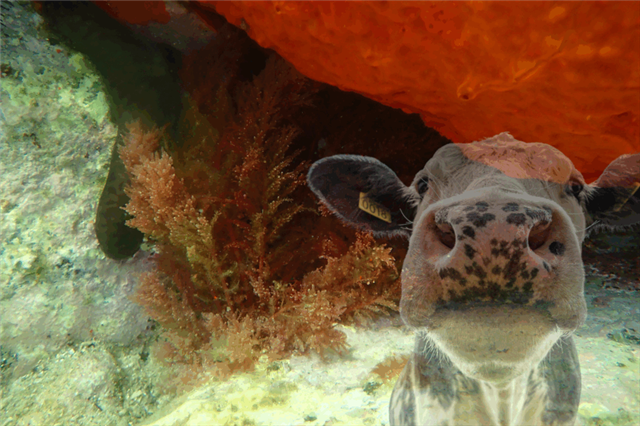Source: Dairy Global, 31 July 2025 Link
Pan-European researchers led by Professor Chris Reynolds at the University of Reading have investigated the potential of macroalgae (seaweed) as a feed supplement to reduce methane emissions from dairy cows. The study focused on three seaweed mixtures, keeping iodine levels within EU regulatory limits, and assessed their effects on feed intake, milk yield, milk composition, and methane production.

Study Design:
-
Animals: 40 lactating Holstein cows, divided into 4 groups (10 cows each).
-
Feeding treatments:
-
Control (no seaweed)
-
Mixture of Ascophyllum nodosum (AN), Fucus vesiculosus (FV), and Asparagopsis taxiformis (AT) (5:45:50, 1.5 kg DM)
-
Mixture of AN and FV (90:10, 6.5 kg DM)
-
Mixture of FV and AN (90:10, 17.5 kg DM)
-
-
Measurements: Daily milk yield and dry matter intake (DMI), weekly milk composition, methane emissions using GreenFeed chambers (weeks 5–7), milk mineral concentrations (weeks 1–6), and milk fatty acids (week 6).
Key Findings:
-
Methane Emissions:
-
AN:FV and FV:AN mixtures alone did not reduce methane.
-
AT combined with AN and FV reduced methane emission by ~9%, methane yield by ~12%, and methane intensity by 20% compared to control or AN:FV mixture.
-
-
Milk Composition:
-
All seaweed treatments increased milk iodine 1.7–2.2-fold, with AN:FV showing peak levels in weeks 3 and 5.
-
AN:FV lowered milk urea concentration, suggesting effects on rumen protein degradation.
-
AT:AN: FV altered fatty acid profiles (lower C18:3n6, higher C15:1 and C17:0) without affecting overall milk yield or other composition metrics.
-
Conclusion:
Incorporating small amounts of Asparagopsis taxiformis with AN and FV can reduce methane emissions without negatively impacting milk production. Mixtures without AT influenced milk urea but did not significantly affect methane.


-

juliabarney02
-
Cancel
-
Vote Up
0
Vote Down
-
-
Sign in to reply
-
More
-
Cancel
Comment-

juliabarney02
-
Cancel
-
Vote Up
0
Vote Down
-
-
Sign in to reply
-
More
-
Cancel
Children